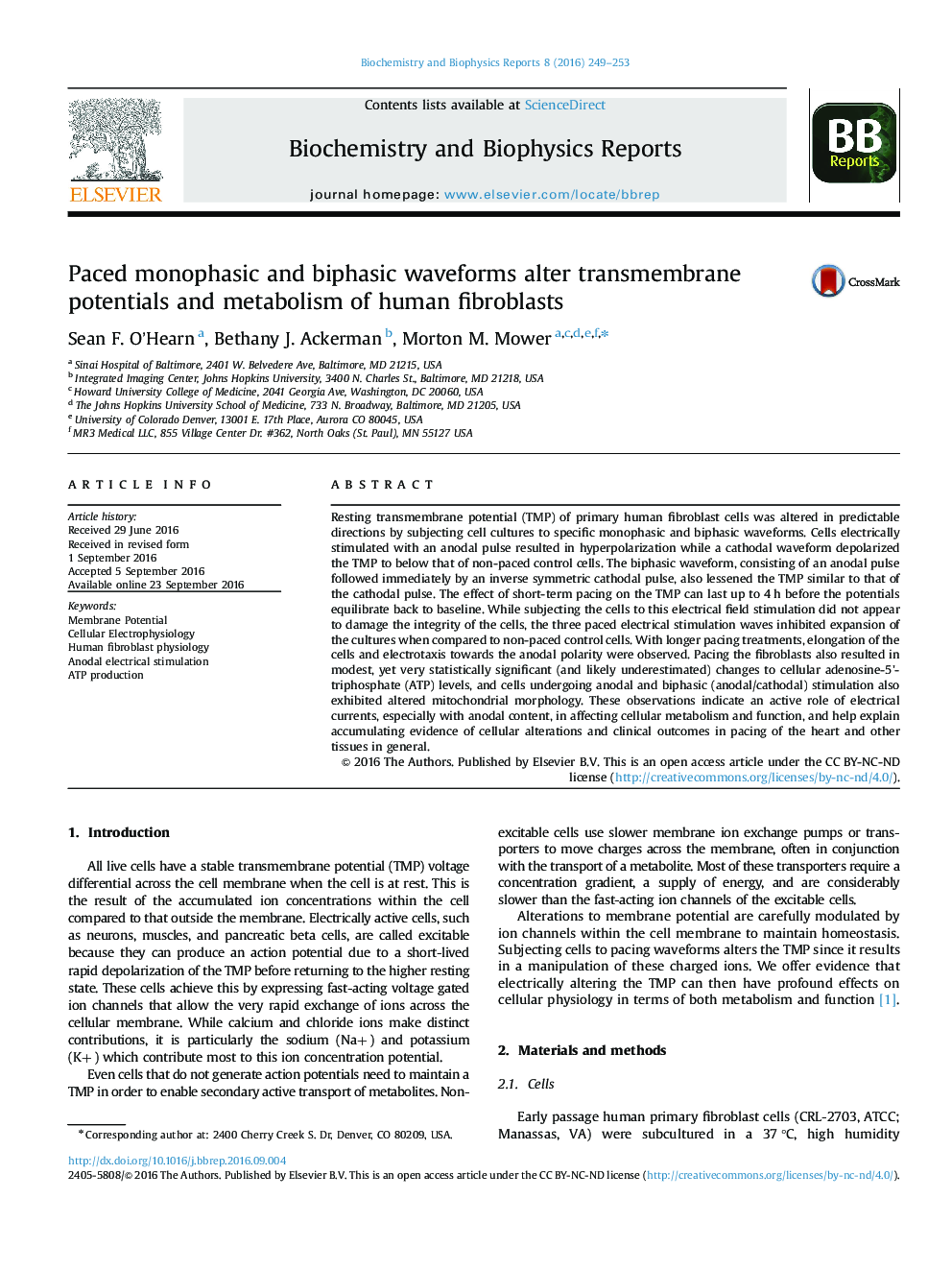| Article ID | Journal | Published Year | Pages | File Type |
|---|---|---|---|---|
| 8298492 | Biochemistry and Biophysics Reports | 2016 | 5 Pages |
Abstract
Resting transmembrane potential (TMP) of primary human fibroblast cells was altered in predictable directions by subjecting cell cultures to specific monophasic and biphasic waveforms. Cells electrically stimulated with an anodal pulse resulted in hyperpolarization while a cathodal waveform depolarized the TMP to below that of non-paced control cells. The biphasic waveform, consisting of an anodal pulse followed immediately by an inverse symmetric cathodal pulse, also lessened the TMP similar to that of the cathodal pulse. The effect of short-term pacing on the TMP can last up to 4Â h before the potentials equilibrate back to baseline. While subjecting the cells to this electrical field stimulation did not appear to damage the integrity of the cells, the three paced electrical stimulation waves inhibited expansion of the cultures when compared to non-paced control cells. With longer pacing treatments, elongation of the cells and electrotaxis towards the anodal polarity were observed. Pacing the fibroblasts also resulted in modest, yet very statistically significant (and likely underestimated) changes to cellular adenosine-5'-triphosphate (ATP) levels, and cells undergoing anodal and biphasic (anodal/cathodal) stimulation also exhibited altered mitochondrial morphology. These observations indicate an active role of electrical currents, especially with anodal content, in affecting cellular metabolism and function, and help explain accumulating evidence of cellular alterations and clinical outcomes in pacing of the heart and other tissues in general.
Related Topics
Life Sciences
Biochemistry, Genetics and Molecular Biology
Biochemistry
Authors
Sean F. O'Hearn, Bethany J. Ackerman, Morton M. Mower,
